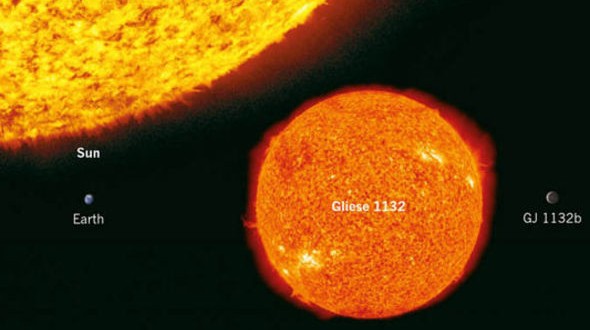Scientists hunting distant worlds say they have made one of their most significant discoveries to date – a kind of hot twin to our Venus.
The rocky planet, called GJ 1132b, is slightly larger than the Earth and, like Venus, its surface is too hot to support liquid water. But scientists believe the planet will be invaluable in the search for extraterrestrial life.
At 39 light years away, GJ 1132b is the nearest rocky exoplanet yet discovered. Its relative proximity to Earth means that astronomers now have an important test bed to study the atmospheres of other far-away planets with telescopes that could detect the first chemical signatures of life beyond the solar system – such as atmospheric methane.
Planet GJ 1132b orbits so close to its own star that its temperatures reach 232C, which although too hot for life – as we know it – is still cool enough for the planet to possess an atmosphere.
“Our ultimate goal is to find a twin Earth, but along the way we’ve found a twin Venus. We suspect it will have a Venus-like atmosphere too, and if it does we can’t wait to get a whiff,” said David Charbonneau of the Harvard-Smithsonian Centre for Astrophysics in Cambridge, Massachusetts, who led the study published in Nature.
Astronomers discovered the planet by measuring the small fluctuations of light from the star Gliese 1132 as the planet passed in front of it every 1.6 days. The scientists calculated that the planet is orbiting at a distance of 1.4 million miles from the star, compared to the 36 million miles between the Earth and the Sun.
“If we find this planet has managed to hang on to its atmosphere over billions of years, that bodes well for the long-term goal of studying cooler planets that could have life,” said Zachory Berta-Thompson of the Massachusetts Institute of Technology.
“We finally have a target to point our telescopes at and dig much deeper into the workings of a rocky exoplanet.”
Agencies/Canadajournal
 Canada Journal – News of the World Articles and videos to bring you the biggest Canadian news stories from across the country every day
Canada Journal – News of the World Articles and videos to bring you the biggest Canadian news stories from across the country every day



